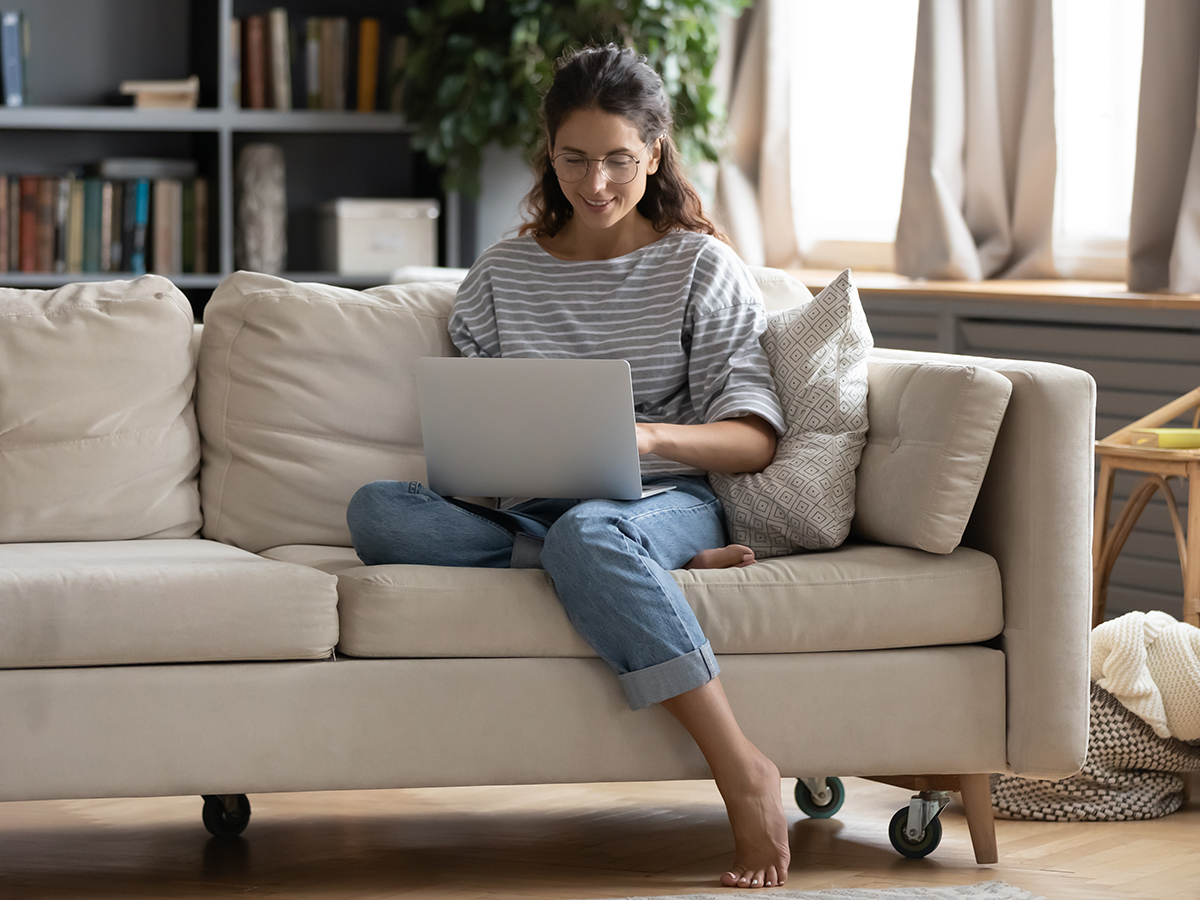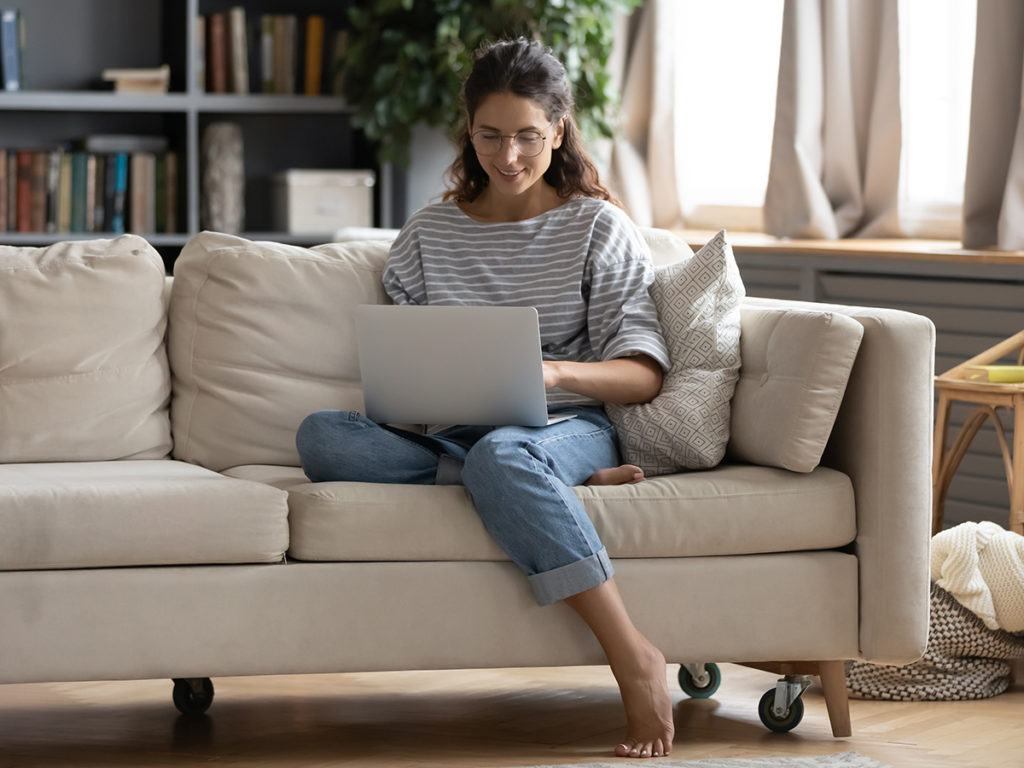

Podiatrists assess, diagnose and treat problems with the feet and legs. Working with people across the entire age spectrum and from all walks of life, from young children to professional sports teams and those in their older golden years, we see and treat a diverse range of foot problems every day.
When it comes to the most common foot concerns we hear as podiatrists from our patients, the past 1.5 years of moving in and out of lockdown means that these have changed somewhat. Here are five of the top foot concerns we hear in 2021, why they’re occurring, and what you can do to prevent them from affecting you.
1. Heel Pain (Plantar Fasciitis/Fasciopathy)
Plantar fasciitis feels like a stabbing pain at the bottom of the heel, which may extend to the inside of the heel or your arch. Many of our patients feel it first thing in the morning, as soon as they get out of bed and place their feet on the floor. Also, when they go to stand after sitting. For some, it settles as soon as they get walking and moving their feet. For others, it lingers as an ache throughout the day.
Plantar fasciitis is the damage to connective tissue called the plantar fascia, which starts at the base of your heel and fans out across the arch to connect to all five toes.
We’re seeing more cases of plantar fasciitis because many Australians are working from home in slippers or barefeet and have taken up long walks around their neighbourhood as their primary form of lockdown-approved exercise. In fact, research in the States showed that 59% of people don’t plan to renew their gym memberships, with most finding more “affordable” ways of exercising and maintaining a healthy lifestyle – like walking.
Prevent plantar fasciitis by wearing good, supportive shoes when walking, stretching and warming up before you head out. Flexible, warm muscles help reduce injury risk so warm up (gentle stretch/ slow walk) prior to exercise and stretch after exercise to maintain optimal muscle length and flexibility. Address any postural foot problems using custom foot orthotics, and never ignore a niggle or dull ache at the bottom of your heel. As plantar fasciitis is an overuse injury, it is more likely to start as a gradual ache that worsens, rather than coming on suddenly and unexpectedly. Listen to your body, and treat that pesky niggle before it turns into plantar fasciitis.
2. Metatarsalgia
Metatarsalgia feels like aches, sharper pains or the feeling of burning around the ball of your foot or your midfoot.
Metatarsalgia is an umbrella term for pain around the long bones in your foot called your metatarsals, particularly where they form joints with other bones at the balls of your feet.
We’re seeing more cases of metatarsalgia because a lot of people are spending all day walking around their home without wearing shoes. As shoes help cushion and support the feet, when the feet are left to fend for themselves against the hard floor week after week, the stress adds up, and they become more vulnerable to damage – and pain.
Prevent metatarsalgia by wearing shoes around your home during ‘work hours’ when you’re working from home during lockdown. This will help mimic the conditions your feet were exposed to during your regular, pain-free workday. If you were previously experiencing foot pain, then see your podiatrist as there will be an underlying problem at play.
3. Capsulitis
Capsulitis feels like tenderness, pain and swelling around one or more of the joint capsules at the ball of your foot.
Capsulitis is the weakening of and damage to the ligaments and connective tissues that enclose a joint at the ball of your foot – where the long bones (metatarsals) meet the toes.
We’re seeing more cases of capsulitis because again, people are walking around on their bare feet all day, moving up and down their stairs with all their body weight on their forefoot, doing everything they’d normally do – but with maximum pressure on their joints – and joint capsules. While joint capsules are strong, when they’re not used to these forces, and they’re occurring for a large part of the day, week after week, damage can occur.
Prevent capsulitis by ideally wearing comfortable and supportive shoes around the home – but if that’s not possible, even slippers can help make a difference by alleviating some of that direct pressure on the joint capsules at the ball of the foot. Other factors like a tight Achilles can also contribute to overloading your forefoot by having your heel lift slightly earlier when you take a step (so you spend longer on the ball of your foot during regular walking), so get stretching, too.
4. Swollen Feet & Legs
Swollen feet and legs feel tight, heavy and uncomfortable. Pain may or may not be present, and spider veins or varicose veins may or may not be present.
Swollen feet and legs often occur because the veins responsible for moving blood and fluids up the legs against gravity aren’t doing their job properly. Other causes include pregnancy, injury, medical conditions, medications, diet, lifestyle factors and more. We’ve detailed these causes and more here.
We’re seeing more swollen feet because some people are moving much less than they used to, and are still sitting for long periods during the day. Whereas going to work used to impose at least some form of mandatory exercise on our commute, many patients we talk to describe their exercise routine as being limited to moving between their bed, office desk, kitchen and lounge – with the occasional trip to the mailbox. Movement and exercise is the best way to instantly boost our circulation, promoting healthy blood flow around the body – including up from the legs. On the other hand, sitting for long periods at your desk with your legs hanging down means gravity pulls the fluid down into your feet, resulting in swollen feet.
Prevent swollen feet and legs by standing and moving often throughout the day. Take a break every hour and walk around for five minutes. Stretch. Jump on the spot. Whatever you need to get your blood pumping and moving. If the swelling is getting worse, try wearing compression stockings, and see your podiatrist.
5. Corns
Corns feel like a firm lump on the foot. On the bottom of the foot, it can feel like walking on a painful pebble. Corns often have callus over them or around them.
Corns are cone-like areas of hard, dead skin that extend into the foot. They don’t have any living tissue and the pain comes from the pressure of the corn pushing up into your foot and irritating the skin around them.
We’re seeing more corns because, for those taking long daily walks, the friction from their shoes (often because they’re not quite the right fit) is causing the corn to build. For those walking around the home in bare feet, the constant pressure on your feet means your body responds by ‘hardening’ the skin, resulting in a corn.
Prevent corns by wearing comfortable, well-fitting shoes, both inside and outside of your home. Your corns are a natural way of showing you where excess pressure or rubbing friction is occurring. Find out what’s causing it, and change it. See your podiatrist to have your corn quickly and painlessly removed – then protect that area to stop it from returning. Corns won’t go away on their own.
You Shouldn’t Put Up With Foot Pain
Having foot pain isn’t normal – pain is your body’s warning sign to prevent injury – or to keep it from getting worse. We’ve been working extensively to help Australians manage their foot health in and out of lockdown. If you’re experiencing pain in your feet or legs, we’re here to help. Book your appointment online or call us on 1800 366 837.


